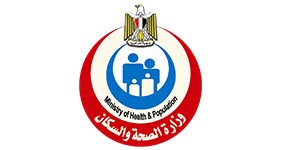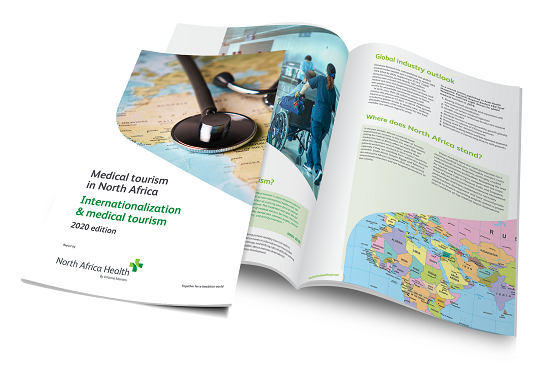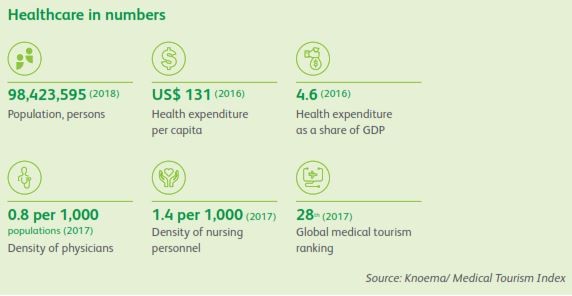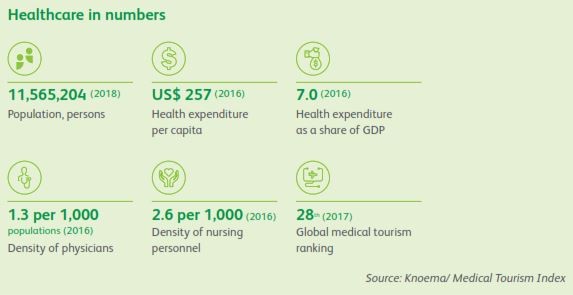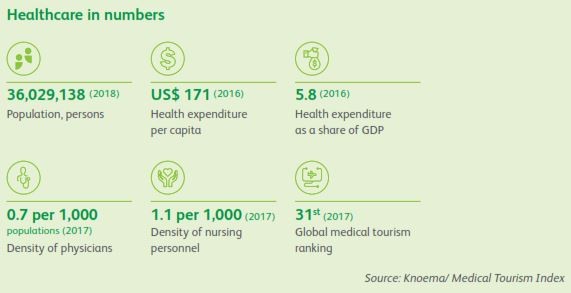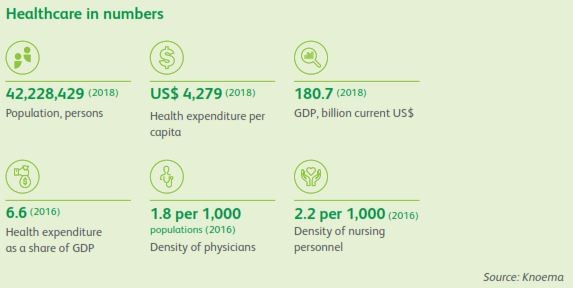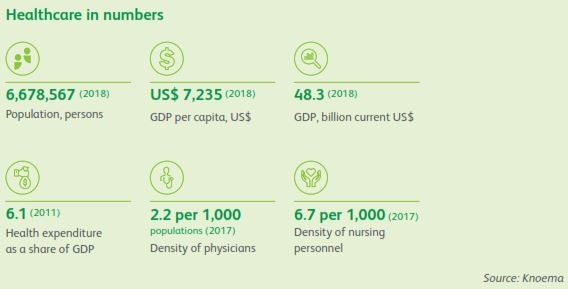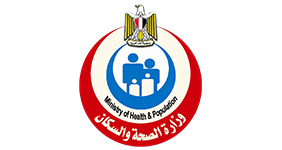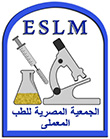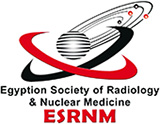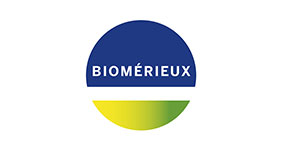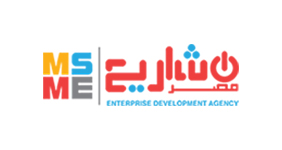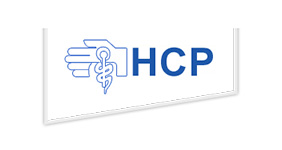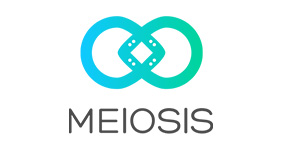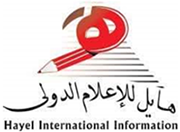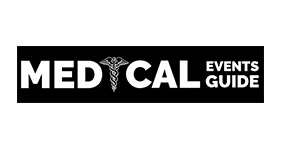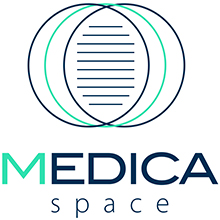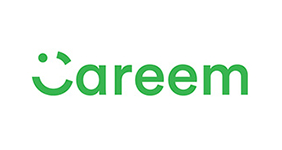Medical tourism in North Africa
Internationalisation and medical tourism 2020 edition, Report by North Africa Health
What is medical tourism?
“Medical tourism is when consumers elect to travel across international borders with the intention of receiving some form of medical treatment. This treatment may span the full range of medical services, but most commonly includes dental care, cosmetic surgery, elective surgery, and fertility treatment.”
(OECD, 2010)
View the report to find out more
Traditionally, healthcare delivery has been bounded by the nation-state, however, in recent decades, significant economic, social and political changes have encouraged a more trans-national and international role for health policy development. These national interconnections have offered new opportunities for healthcare delivery across borders, and have led to the rise of medical tourism as a global phenomenon.
Several developments support this growth in global medical travel:
- Regulatory regimes such as the General Agreement on Trade in Services (and other World Trade Organisation agreements)
- Recognition of transnational disease patterns
- Growing patient mobility (low-cost airlines, advancements in information-communication technology, and shifting cultural attitudes among the public about overseas destinations)
- Industry development
Global industry outlook
Grandview Research has indicated that the global medical tourism market size is expected to reach US$ 179.6 billion by 2026, registering a 21.9% CAGR during the forecast period. Nearly 100 million patients have crossed international borders for medical care since the beginning of this century, and even greater numbers have travelled within their own country for unavailable treatments closer to home.
In 2019, more than 20 million patients will continue this practice with international healthcare travel is set to grow at 15-20% in 2019. This growth is fuelled by greater access to quality care, seeking affordable options, while others travel for the best available care without regard to price.
In a recent article published in Arab Health Magazine, Patients Beyond Borders CEO Josef Woodman outlined eight drivers for global medical tourism in 2019:
- Raising clinical standards and reputation with internationalaccreditation
- The rise of online medical agencies
- Health insurance continues to shun the medical tourism market
- Medical tourism is seeing healthy growth globally
- Increase in volume of Chinese patients
- Rising need for dental treatment
- Millennials seeking better and less expensive treatment
- Telemedicine is connecting doctors with patients
Where does North Africa stand?
In the past decade, African countries have experienced an increase in the number of tourists visiting for medical treatment. For overseas visitors, medical tourism in Africa offers services that are often less expensive and of higher quality than patients would have received in their home countries, especially if they are travelling from within the African continent. South Africa, Tunisia, Egypt and Morocco are among the African countries that are attracting international attention and are targeting investors in the industry.
These markets have the ideal prerequisites for a thriving medical industry: favourable climates, exotic international tourist locations, and highly certified medical practitioners and facilities. Recognising the need for capital and financing to compete with the major medical tourist hubs in Thailand, India, and Singapore, these African governments have embraced international partnerships and have committed to necessary infrastructure development and have secured private capital to finance upcoming projects aimed to propel their countries as top medical tourist destinations.
Egypt
According to Oxford Business Group, though a pluralistic mix of public facilities characterises the Egyptian healthcare system, it has been strained by rapid population growth and relatively low levels of funding. Consequently, most Egyptians opt for private facilities, fuelling high levels of out-of-pocket expenditure and increasing the desire for private insurance.
In response, the government has initiated several reforms aimed at improving quality and access to healthcare services for its population. Demand for medical equipment, pharmaceuticals and healthcare facilities are likely to follow, offering continued private sector growth and opportunity.
In 2017, the Medical Tourism Index (MIT) ranked Egypt 28th in terms of global ranking for medical tourism. Egypt ranked 3rd for its medical tourism industry in the Arab world due to better-cost advantage versus other countries in the area while also taking advantage of its reputation as a historic and resort destination. However, the MIT highlighted that the country needs to work on the international accreditation of its healthcare facilities and the quality of its medical staff.
In recent years, a number of initiatives have been undertaken in order to support inbound medical tourism to the country. In June 2019, it was announced that Egypt is embarking on a mega-project to establish the biggest medical tourism city in the Middle East and North Africa region with more than LE 20 billion investments.
Meanwhile, in December 2018, the Tourism and Aviation Committee of Egypt’s House of Representatives announced the start of the medical tourism project that would bring tourists to the country during the second half of 2019. The committee highlighted that there are many tourist areas in Egypt that have the ability to benefit from medical tourism including 16 inland and coastal locations, where natural treatments for many diseases are available such as Helwan, Ain Assera, Ain Sokhna, Hurghada, Fayoum, Oasis, Aswan, Sinai and Safaga on the Red Sea.
The committee also pointed out that Egypt has many sulfurous and mineral springs that have unique chemical compounds. Also, the clay in these sulfurous springs can cure many bone, digestive and respiratory diseases, while skin diseases can be treated by burying the patient in the hot sands.
Previously, in February 2017, Egypt had launched the "Tour and Cure" medical tourism initiative. The initiative offers treatment to the hepatitis C virus (HCV)-infected patients from all over the world, with an effective and advanced treatment program at a lower cost. This was followed in December 2018 by the approval of a draft law on medical tourism to ensure coordination between the Ministry of Tourism and the Ministry of Health in the emerging field of medical tourism.
According to Dr Fady Michael, who is the general medical director of South Sinai Hospital, in Sharm el Sheikh, Egypt, cosmetic surgeries including breast augmentation and lifting, abdominal reconstruction, liposuction, botox and fillers; renal dialysis; dental procedures; chemotherapy; and Lasik treatments are popular among patients from not only the Gulf region, but Russia, Denmark, Italy, Poland and the United Kingdom. South Sinai Hospital is a private facility that has expanded by 1,500 sqm and is now capable of housing 200 beds.
Egypt’s Oasis of Siwa was announced as a global destination for medical and environmental tourism during the medical tourism conference held in Alexandria in 2017. The remote Oasis, located in Egypt’s western desert, 50 km east from Libyan borders, has many springs with water that is said to cure diseases such as psoriasis, rheumatism and some digestive system diseases.
Siwa is also well known among domestic and international medical travellers for the “sun baths”, organised from June through to August near the Dakrur Mountain. The sand of this area is used to treat medical conditions such as rheumatism and problems in the knees, the back and the skin.
Tunisia
In March 2019, the Tunisian government announced a reform that is set to overhaul the country’s healthcare system and strengthen Tunisia’s position as a medical centre for Africa. Oxford Business Group highlighted that the private health sector in Tunisia grew considerably over the last two decades, with the number of private hospital beds increasing from 2100 in 2001 to 6000 in 2019. The chairman of the National Federation of Health Boubaker Zakhama has said that this number is expected to reach 10,000 by 2024.
With a strategic geographic position and a relatively affordable healthcare system, Tunisia has long been regarded as a reliable medical destination in the region. Every year about 500,000 foreign patients seek inpatient care at Tunisian hospitals, and around 2-2.5 million foreign patients utilise outpatient care. The majority of international patients come from its bordering neighbours, Libya and Algeria, but a sizeable number also come from sub-Saharan Africa.
Tunisia’s reputation as a health tourism destination is due, in large part, to its thalassotherapy treatment. Tunisia ranks highly for this medical skin treatment, which uses mineral elements in its Mediterranean shores for a therapeutic experience. The properties of Tunisia’s Mediterranean seawater are believed to soothe dry skin and fight skin irritants such as acne, psoriasis, and eczema.
The country also has an excellent reputation for cosmetic surgery. The combination of a significant investment in training and equipment in the public and private
health sector and the cost of cosmetic surgery and treatment is extremely competitive. Some companies offer all-inclusive cosmetic surgery packages to Tunisia, which makes the process even easier.
Tunisia has also experienced rapid growth in its health resorts with a rise in world-class facilities in Sousse, Hammamet, Djerba, and Gammarth. In addition to attracting international acclaim, these clinics’ regulations follow international standards of accreditation and sanitation.
The most significant impact has been from the investment and tax incentives by the Tunisian government such as abolishing the value-added tax on medical treatment for all non-Tunisian residents, tax exoneration on medical equipment and devices, and a 50% tax break on all investments related to medical institutions
and infrastructure. To further attract private investment, Tunisia has begun establishing medical cities and special investment-zones for companies that have medical expertise.
Upon completion, promoting the vital role of healthcare tourism in Tunisia will be one of the major tasks of The Healthcare City in Tunisia Economic City located on the East coast of Tunisia. One of the main aims of The Healthcare City is to attract patients from Arab and African countries to support the medical tourism industry through the introduction of state-of-the-art hospitals, medical colleges, nursing homes, clinics, and more.
Morocco
According to Oxford Business Group, Moroccan health indicators have improved steadily in recent years. Recent regulatory changes have opened up the private sector to increased investment, and the public sector has been gaining ground on the former in terms of its level of spending. For example, Elsan, a private France-based health operator, constructed a 136-bed facility in the Bouskoura municipality of Casablanca called Clinique Ville Verte, which was inaugurated in January 2018.
There are around 360 private healthcare clinics operating in Morocco, according to US Department of Commerce figures, and over 12,000 doctors working in the segment. Until 2015, only doctors were permitted to own private clinics, but legislation passed that year removed this restriction, allowing both Moroccan and foreign
individuals to establish clinics regardless of their profession.
Morocco is making great strides forward in health and wellness tourism. In 2017, Morocco ranked 31st overall in the Medical Tourism Index (MIT). Its ranking was given, not for being perceived as a cheaper healthcare option, but because it is a tourism hub trying to attract more and more visitors every year.
Although the segment is not as well developed as its Eastern European and Asian neighbours and Tunisia, in some respects, it benefits from a combination of advantages, such as proximity to Western Europe, a pleasant climate, and the availability of numerous low-cost flights to the kingdom. Many Moroccans are fluent in both Arabic and French, making it a particularly attractive destination to both patients from the Francophone world and from Arab countries, which are a lucrative and increasingly important source market for the country. In that way, it will compete directly with Tunisia in the near future.
To enhance the competitiveness of Morocco’s overall tourism industry, Morocco’s Ministry of Tourism launched the national strategy Vision 2020. Its primary goal is to attract 1.5 billion tourists and accessible markets by 2020, with a major focus on the Western and Northern Europe region. The health and wellness tourism sectors are cited in the strategy as two major industries ripe for development and job creation.
According to Oxford Business Group, Medical tourism in Morocco is dominated by cosmetic surgery - of which the kingdom was an early pioneer – and dental treatment. The main incentive for patients to go under the knife in Morocco tends to be financial; cosmetic surgery and dental implant prices in the kingdom can respectively run as low as 30% and 50% of the cost for the identical procedures when they are conducted in France or other parts of Western Europe. In addition to lower operational costs, cosmetic surgery in Morocco is not subject to value-added tax (unlike in some European countries, including France), which further brings down prices.
Marrakech Healthcare City (MHCC), located on the South side of Marrakech on Mohamed the Sixth Boulevard, is expected to become the top medical tourism destination in the county upon completion of the project. The facility will provide a full range of clinical services, from home care to quaternary care, as well as medical apartments and hotel accommodations for rehabilitation and recovery, to support patient throughput, convalescence and family accommodation.
Algeria
Over the past two decades, considerable progress has been made in the coverage and quality of healthcare services in Algeria, with indicators improving steadily, alongside a decline in instances of communicable diseases, according to Oxford Business Group.
However, healthcare is heavily subsidised in Algeria in line with the introduction of a national health care system in 1975. While the vast majority of health establishments in the country are still entirely subsidised by the government, this is gradually beginning to shift as the private sector grows.
Even though the state is heavily involved in healthcare, there were 8400 private specialist practices and 7000 private generalist practices as of 2015. In recent years a number of private facilities and clinics have opened across the country, both in general and specialised care, while many of the existing private establishments are expanding.
Transfers of patients abroad have decreased by 90% since 2000, reflecting the considerable improvements that have taken place in the domestic system. However, a large number of Algerians still go abroad for more complex medical treatments. France granted 1,600 medical visas for Algerian citizens in 2014, and it is estimated that many more Algerians visiting France on tourist visas seek out medical treatments while there. A sizeable number of Algerian medical tourists also travel to Tunisia, Morocco and Turkey.
From a medical tourism point of view, one very important aspect is the government’s more recent focus on spa tourism. This sector is already well developed and has substantial additional potential thanks to the country’s wealth of hot springs. The segment currently comprises eight large government-run facilities that have agreements in place with major local health insurance providers, such as the state-run National Health Insurance Fund, to provide treatments to their clients, in addition to 13 privately-run spa resorts. In 2017, 70 hot springs across 24 governorates in the country were allotted to private investors for development into spa facilities. This segment, which is part of an ongoing medical tourism plan, is already attracting over 300,000 patients per year.
According to Trade Malta, Algerian authorities are now stepping up efforts to expand tourism, and foreign hotel operators have become increasingly active in recent years. While the mass market package tourism prevalent in many other Mediterranean destinations is not on the cards, or even desired by the authorities, foreign business tourism and niche areas such as medical have strong potential for growth despite.
According to InterMedline, a medical tourism facilitator, the main procedures sought by medical tourists in Algeria include:
- weight loss
- dental care
- plastic and cosmetic surgery
- fertility treatment
- orthopaedic surgery
- spine and neurology surgery
- heart surgery and cardiology
- cancer treatment
- general surgery
- eye surgery
- stem cell therapy
Libya
With a weakened healthcare infrastructure in Libya, many people travel abroad to Europe and neighbouring countries such as Jordan and Tunisia for treatment. However, a weak Libyan economy and slow payments by the Ministry of Health have affected the ability of Libyans to get care.
“Libyan patients have been coming to Jordan for medical treatment since 10 years ago and Jordanian medical services are known in Libya with its excellence, high quality care services and competitive prices, and because of that Libyan patients and new Libyan government have chosen Jordan as their first and desirable destination for medical treatment both for wounded people and people with other required medical specialties and treatments,” said Dr. Abdallah Hindawi, CEO of Private Hospitals Association, said in an article published in Medical Tourism Magazine.
Meanwhile, official Tunisian statistics show that even before the 2011 revolution, more than 1.5 million Libyans a year used to travel to Tunisia for tourism or medical treatment.
However, according to The Libya Observer, Libya’s Ministry of Health has announced the cessation of overseas treatment in July 2019, after the mass resignation of members on the High Consultative Committee for Treatment Abroad in protest against Libya’s Central Bank's refusal to pay for patient’s treatments. This will affect government-sponsored Libyan patients travelling to Germany, Jordan and Tunisia, in particular.
About North Africa Health Exhibition and Congress
Due to recent and increasing travel restriction caused by COVID-19 impacting our exhibitors, visitors, and partners, Informa Markets has decided to postpone North Africa Health Exhibition and Congress 2020 until the second half of the year. New dates to be announced soon.
The 2020 edition will host more than 180 exhibitors and 5,000 healthcare providers, medical practitioners, manufacturers, eHealth experts, key buyers, distributors, policy makers and stakeholders from around the world. The event will also highlight 5 key industry areas including Imaging and Medical Devices, Laboratory, SME & Innovation, Medical Tourism and National Pavilion.
Complemented by a diverse range of scientific and educational content, North Africa Health will be hosting a variety of conferences and workshops including ESLM Laboratory Conference (CME-accredited), ESRNM Radiology Conference (CME-accredited) and Digital Healthcare Conference.

